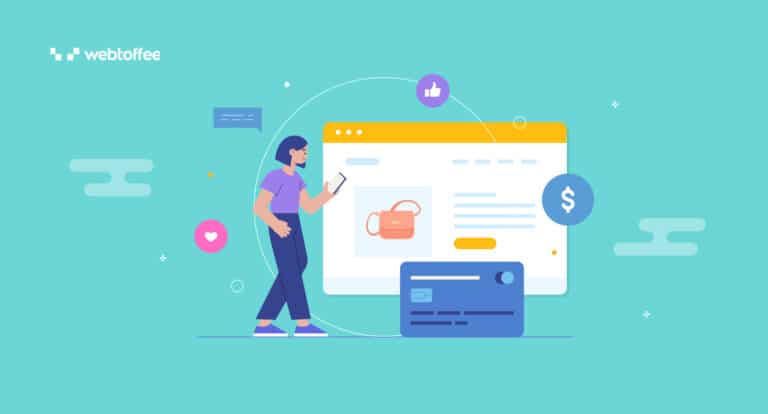As the eCommerce landscape evolves at a rapid pace, the significance of choosing the right payment methods for your online store cannot be overstated.
According to recent industry statistics, 70% of online shopping carts are abandoned during the checkout process. A significant portion of this happens due to the friction in the payment journey. Whether it’s a tricky checkout or not having their favorite way to pay, it messes up their shopping vibe. So, lots of people end up not buying anything.
Furthermore, conversion rates are not merely a reflection of marketing efforts; they are intricately linked to the ease and security of the payment process. Studies reveal that a one-second delay in page load time can result in a 7% reduction in conversion rates.
This blog will delve into the importance of choosing the optimal payment methods for your eCommerce store. We’ll explore the diverse payment options and their impact on the user experience.

Choosing the right payment method depends on your target audience and business model. Offering a variety can cater to different customer preferences, but it’s crucial to balance convenience with security to ensure a positive shopping experience. Let’s dive into the popular eCommerce payment methods:
Credit/Debit Cards:
Credit and debit cards are the major payment methods for online payments. They’re widely accepted and loved for their speed and convenience. Users can make quick transactions with just a few clicks. However, some customers worry about the security of their online transaction, and for merchants, there are fees associated with every transaction made through the payment gateways.
Digital Wallets:
Digital wallets, like PayPal and Apple Pay, have already gained popularity. They offer a secure and fast way to pay without entering card details every time. However, not everyone has a digital wallet, limiting the customer base. Some users also fear security breaches.
Bank Transfers:
Bank transfers involve moving money directly from one bank account to another. It’s a reliable method but can be slow, especially for international transactions. Some customers find the process inconvenient, and fees may apply.
Cash on Delivery (COD):
Cash on delivery is the traditional method of payment that allows customers to pay in cash when they receive the product. It’s great for those hesitant about online payments but can be risky for the seller, as there’s a chance the customer might change their mind upon delivery.
Choosing the right eCommerce payment method is a critical decision that can profoundly impact the success of your online business. Here are key factors to consider:
Customer Preferences
Understanding your target audience is paramount. Different demographics prefer varying payment methods. Offering options that align with your customers’ preferences enhances their shopping experience and increases the likelihood of completing transactions.
Security Measures
Security is non-negotiable in the digital realm. Opt for payment methods that prioritize the protection of sensitive customer information. Displaying trust badges and using secure payment gateways instill confidence in your audience, fostering trust and loyalty.
User-Friendliness
A seamless and user-friendly payment process is crucial for customer satisfaction. Complicated checkouts or lengthy forms can lead to cart abandonment. Prioritize methods that provide a smooth and intuitive user experience, ensuring a hassle-free transaction journey.
Global Acceptance
If your business caters to a global audience, consider payment methods that are internationally recognized and accepted. Providing multi-currency support and accommodating regional preferences can broaden your customer base and enhance your global presence.
Cost Considerations
Evaluate the fees associated with each payment method. Transaction fees, processing costs, and currency conversion fees can impact your profit margins. Strike a balance between offering convenience to customers and managing the financial implications for your business.
Integration and Compatibility
Ensure that the chosen payment methods integrate seamlessly with your eCommerce platform. Compatibility issues can lead to technical glitches and disrupt the purchasing process. A smooth integration enhances efficiency and reduces the risk of technical hiccups.
Mobile Optimization
With the surge in mobile shopping, prioritize payment methods that are optimized for mobile devices. A mobile-friendly checkout experience is essential for catering to the growing number of customers who make purchases using smartphones and tablets.
Regulatory Compliance
Stay up-to-date on legal and regulatory requirements related to online payments. Adhering to industry standards and compliance regulations not only protects your business from legal issues but also reassures customers about the legitimacy and security of your payment processes.
By carefully considering these factors, you can create a payment strategy that aligns with your business goals and provides a positive experience for your customers.
Here are some noteworthy developments shaping the future of online payments:
Buy Now, Pay Later (BNPL) Options:
Buy Now, Pay Later services have gained significant popularity. Platforms like Afterpay and Klarna allow customers to make purchases and pay in installments over time. This flexible payment model is helpful for budget-conscious shoppers, offering them the convenience of immediate acquisition without the immediate full cost.
Voice-Activated Payments:
The integration of voice-activated technology, such as Amazon’s Alexa or Google Assistant, is paving the way for hands-free payments. Users can verbally authorize transactions, providing a seamless payment experience. This trend is likely to grow as voice technology becomes more prevalent in households.
Biometric Authentication:
Enhanced security measures are driving the adoption of biometric authentication for payments. Fingerprint recognition, facial recognition, and even retinal scans are becoming viable methods to verify transactions, offering an extra level of security and a frictionless checkout experience.
Embracing these emerging trends in eCommerce payments can position businesses at the forefront of innovation, meeting the evolving expectations of tech-savvy consumers. As the industry continues to evolve, staying updated on these trends can provide a competitive edge and elevate the overall customer experience.
Conclusion
It’s already clear that choosing the right avenue for your online store is a decision not to be taken lightly. The success of your business depends on the seamless and secure transactions that your chosen payment methods facilitate.
Since customer preferences, industry standards, and technological innovations are constantly changing, it’s crucial to approach the decision-making process with careful consideration. Take the time to understand your audience, align your choices with business goals, and prioritize the security and convenience of your customers.
Each payment method comes with its own set of advantages and challenges, and what works for one business may not necessarily be the best fit for another. Also, remember that the trends in eCommerce are ever-evolving, and what may be a cutting-edge solution today could become outdated tomorrow.
So, as you navigate the options available, may your decisions be informed, strategic, and according to the unique needs of your business and your customers.
Happy selling!



